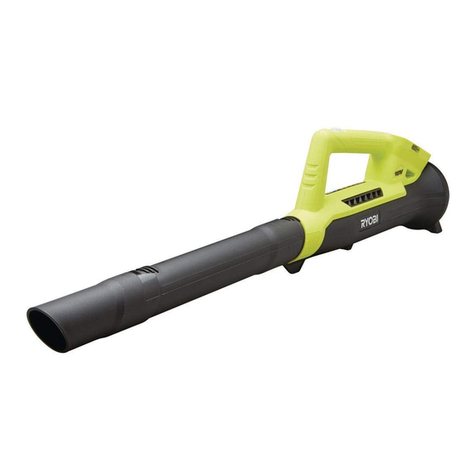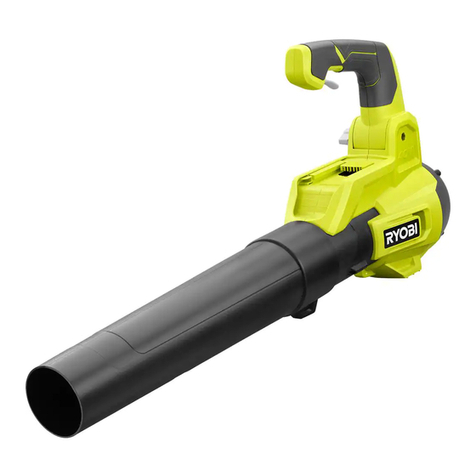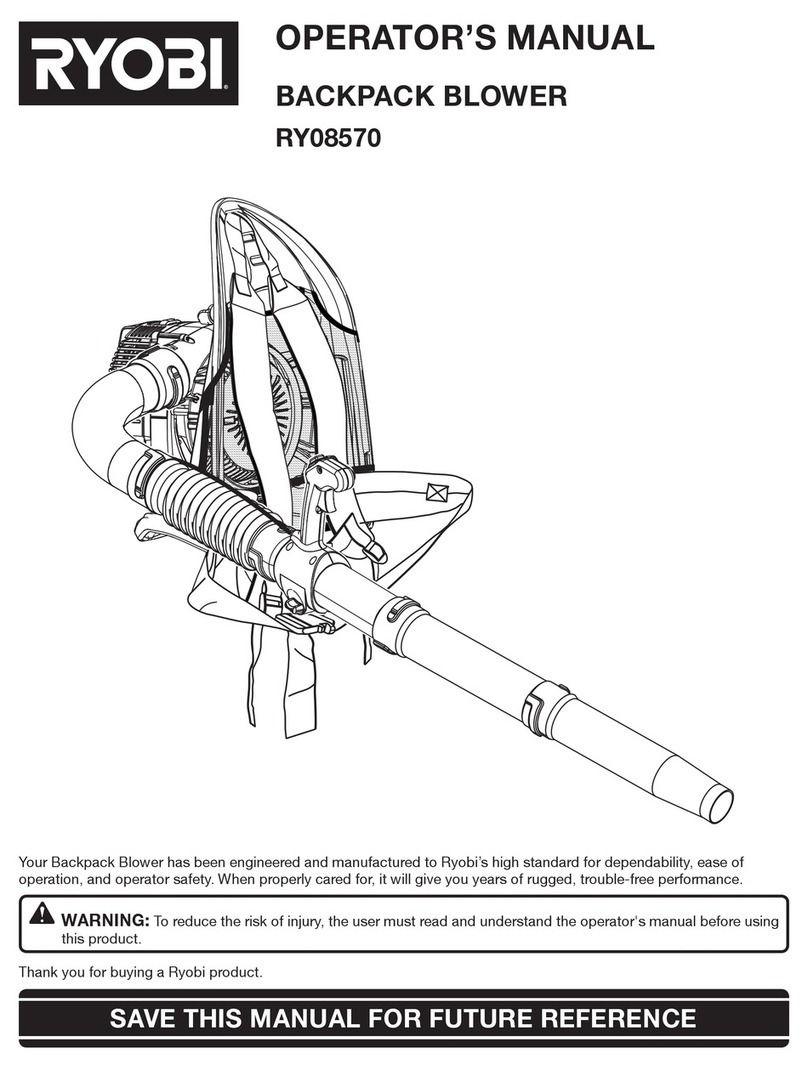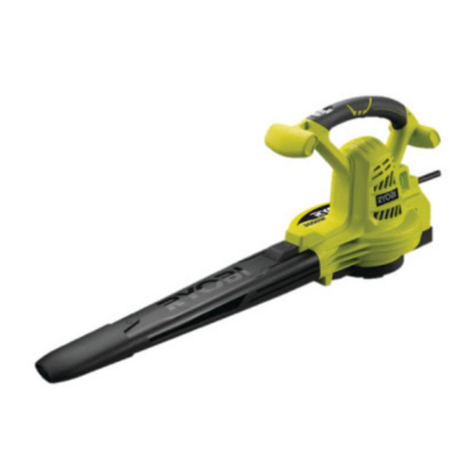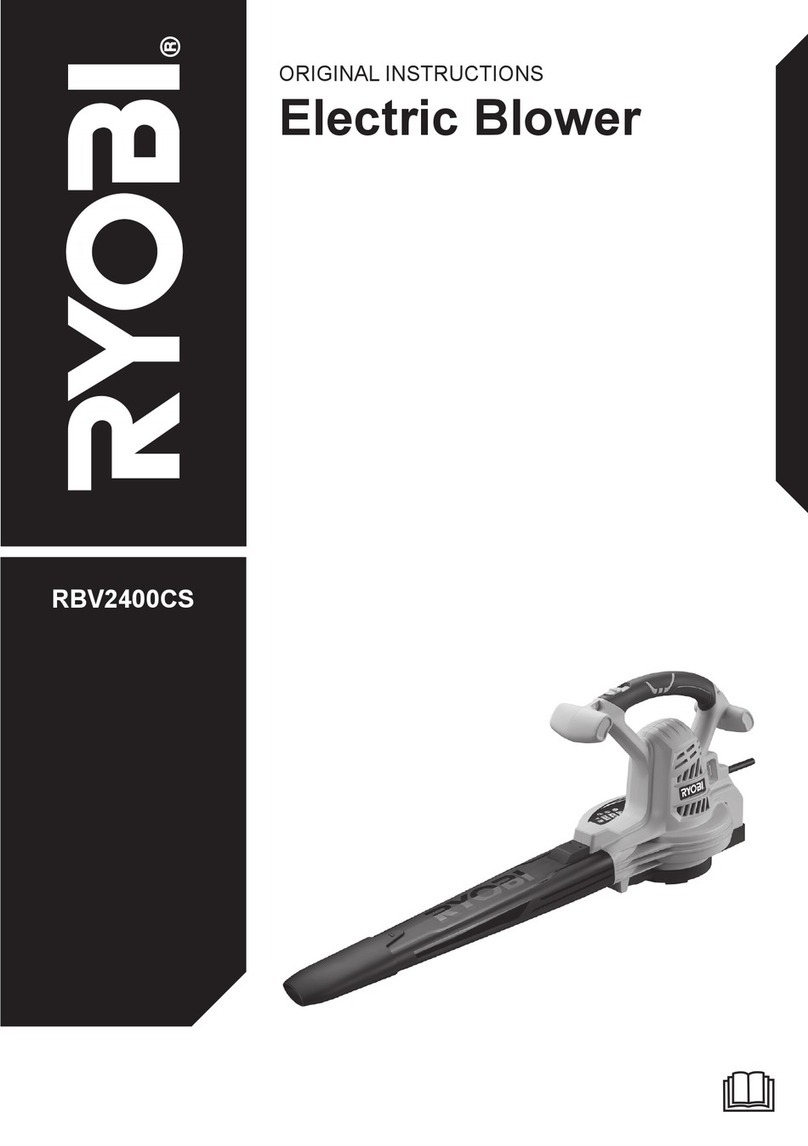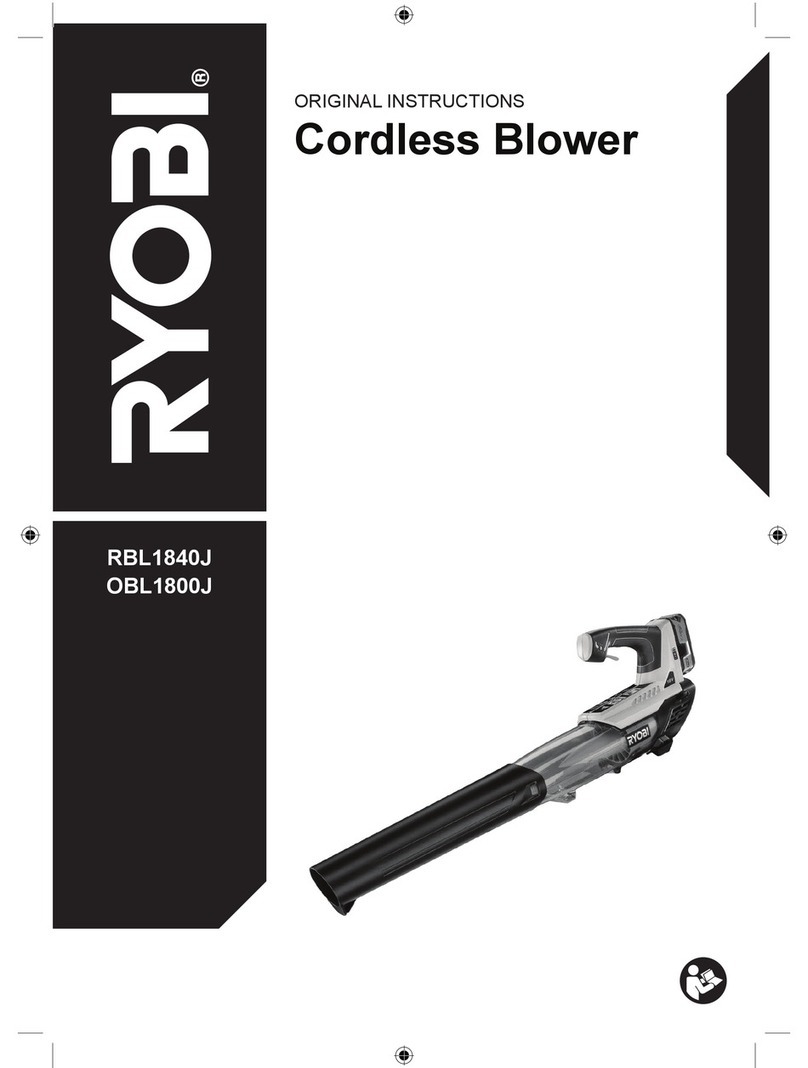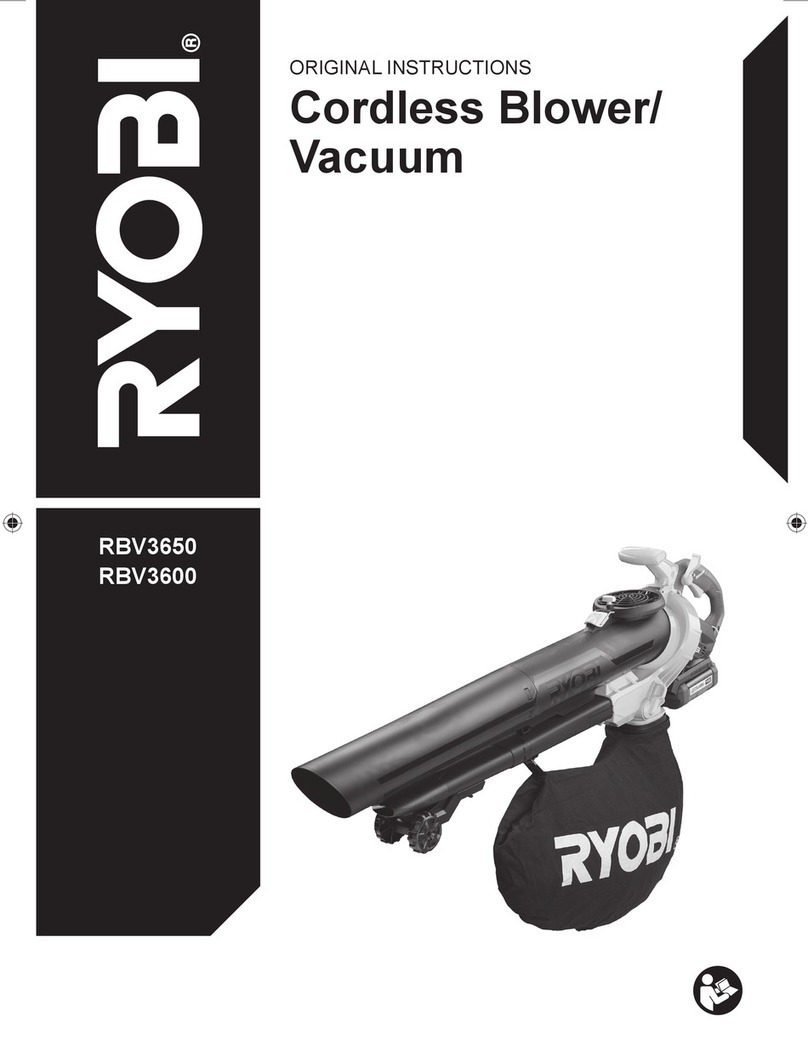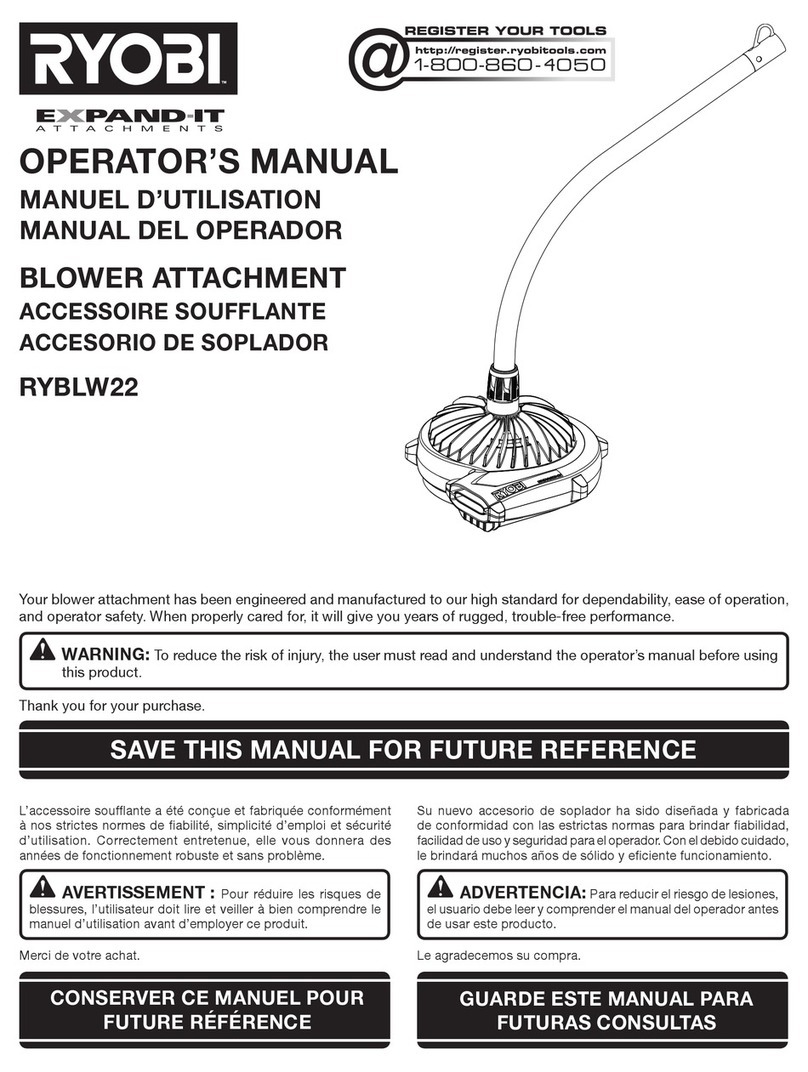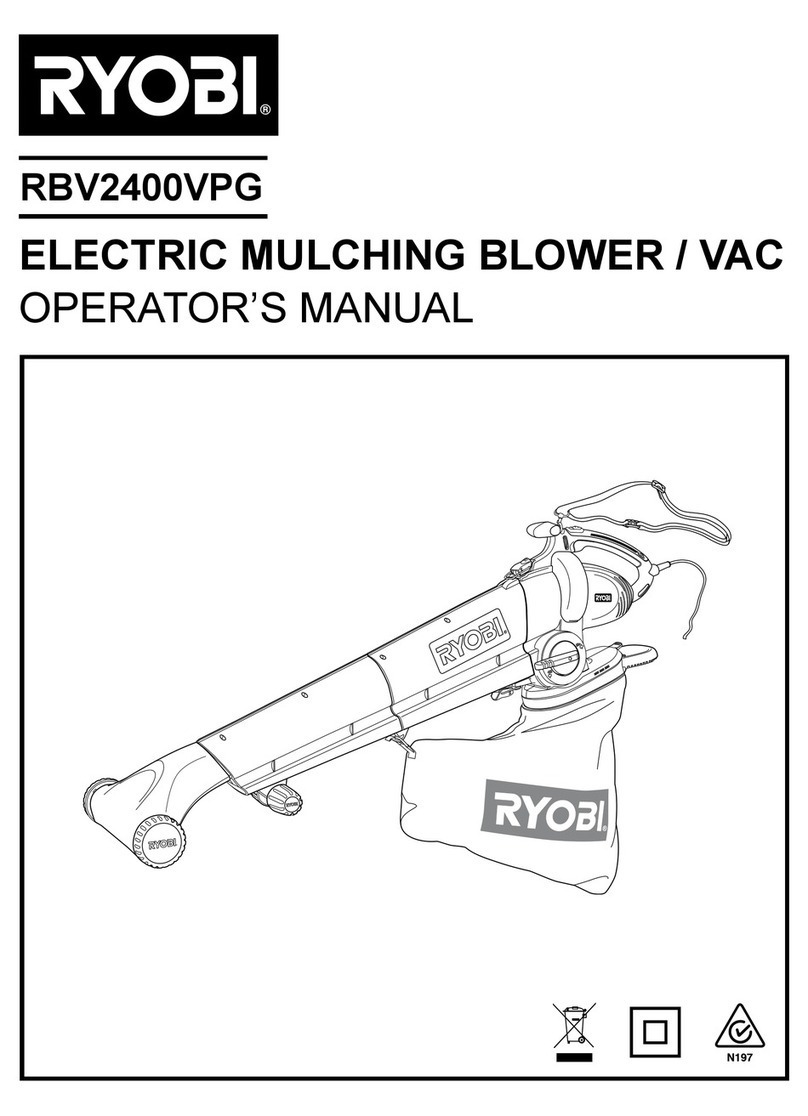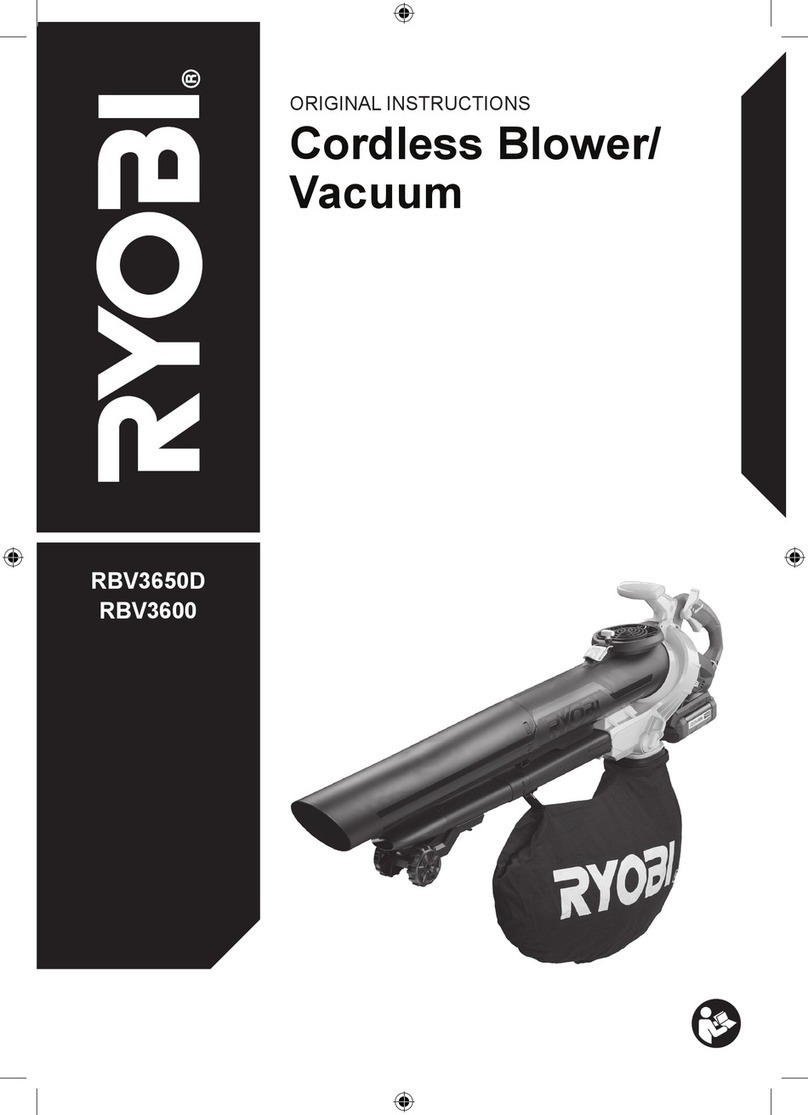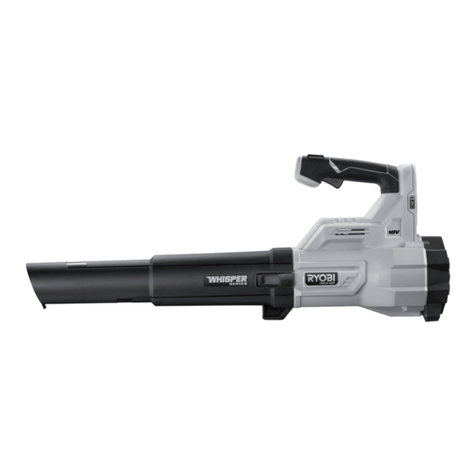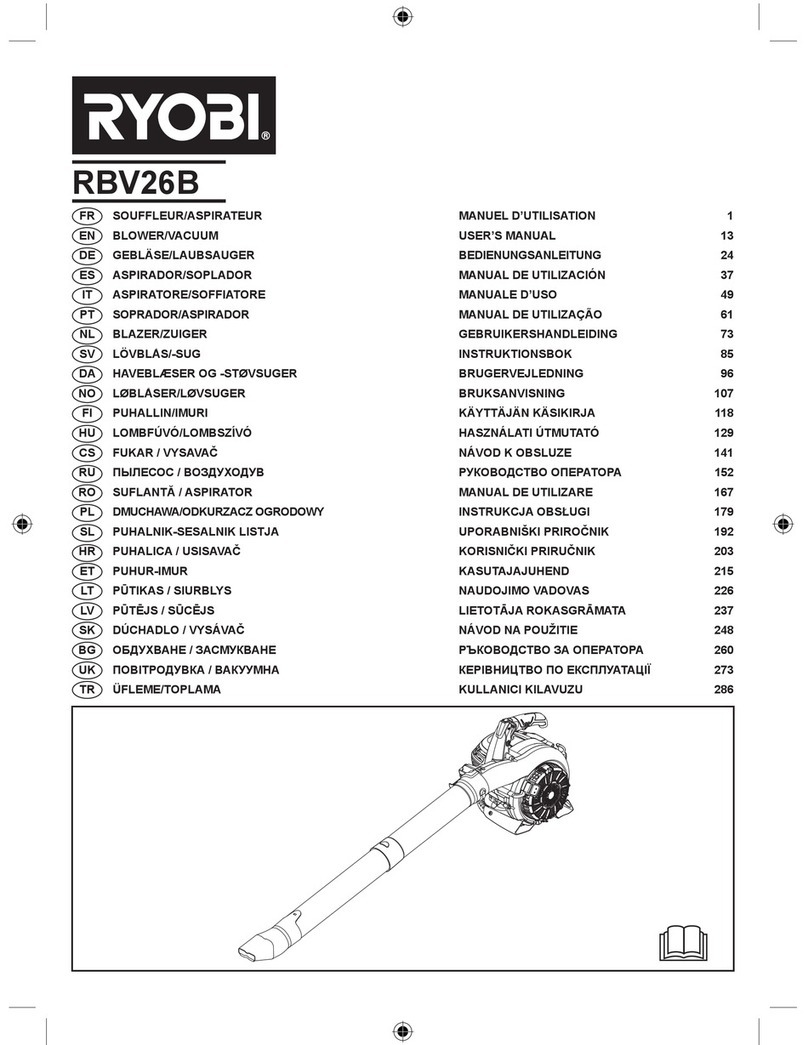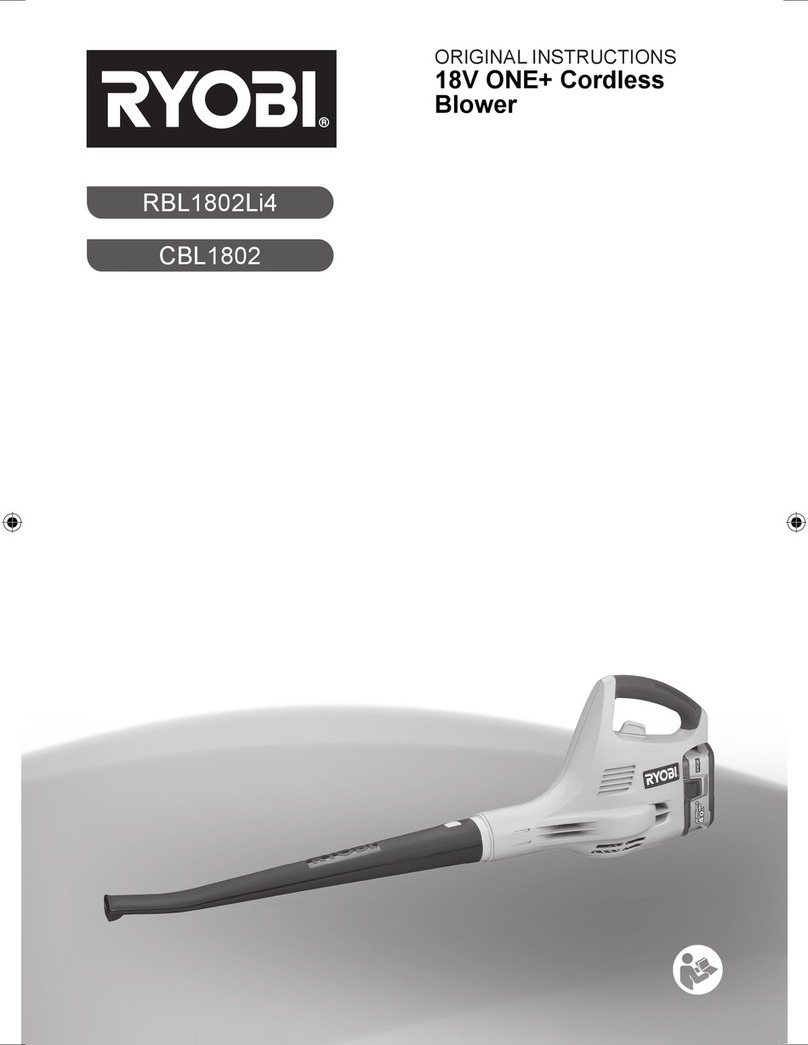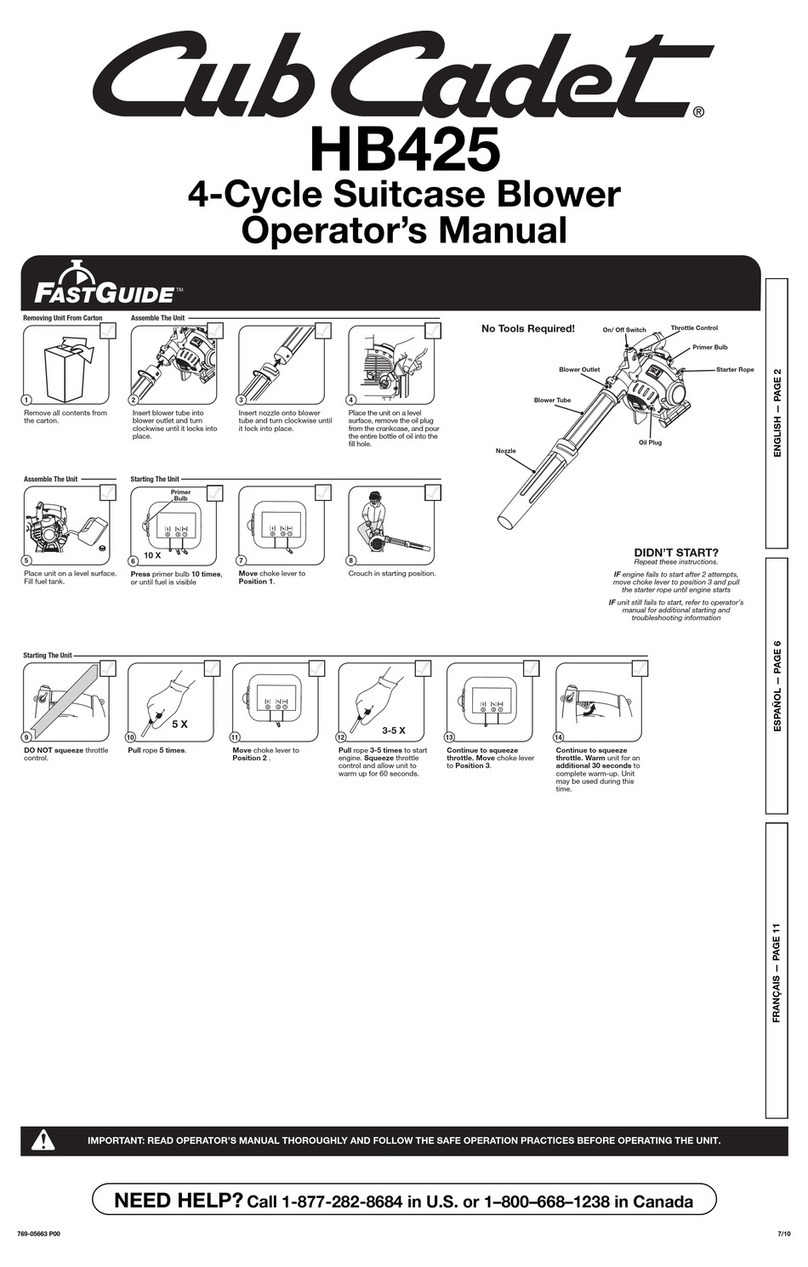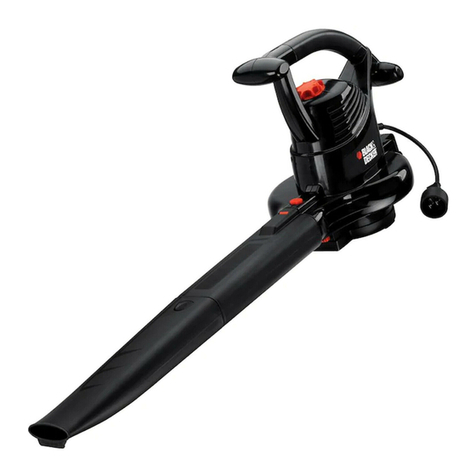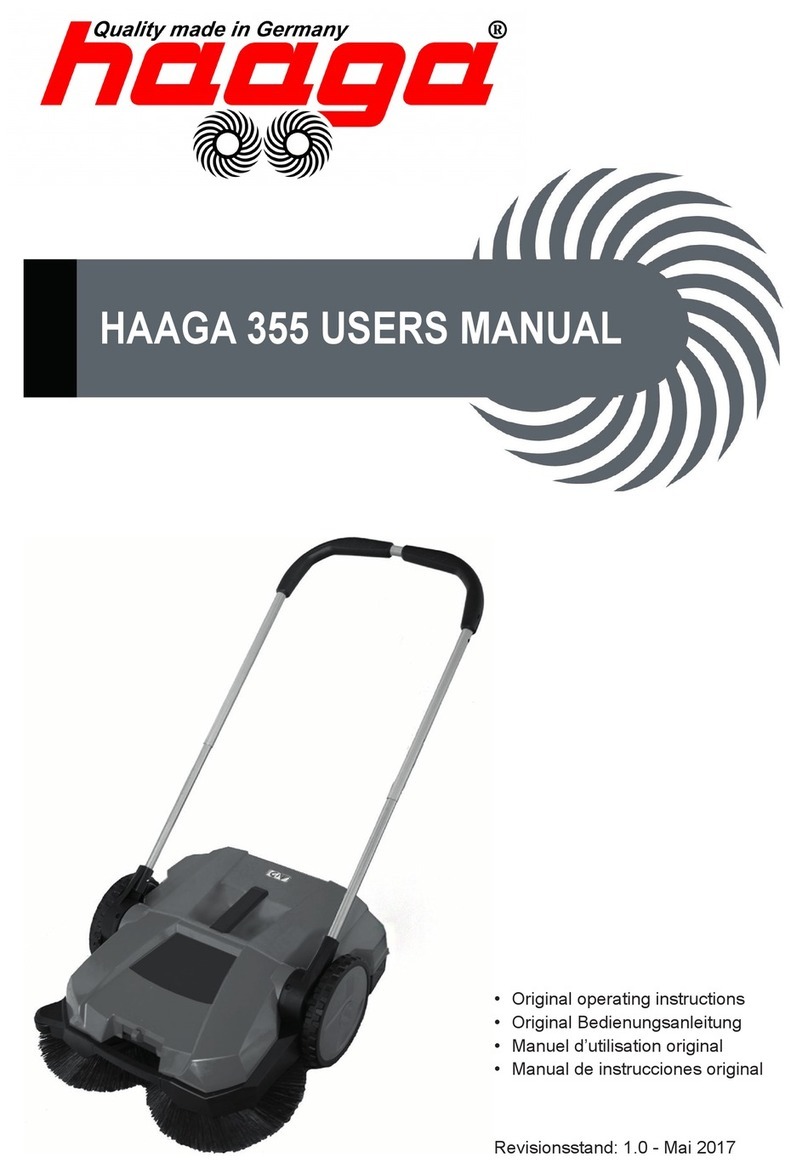
3
IMPORTANT AFETY IN TRUCTION
Do not use on steps, a ladder, roof top, tree, or
other unstable support. Stable footing on a solid
surface enables better control of the blower/vac in
unexpected situations.
Secure long hair so it is above shoulder level to
prevent entanglement in any moving parts.
eep firm footing and balance. Do not overreach.
Overreaching can result in loss of balance.
Turn off all controls before unplugging.
Do not allow to be used as a toy. Close attention is
necessary when used by or near children.
Avoid accidental starting. Be sure the power switch
is not on before plugging in. Turn off power switch
before unplugging.
Do not use tool if switch does not turn it on or off.
Any tool that cannot be controlled with the switch is
dangerous and must be repaired.
Do not leave the tool when plugged in. Unplug from
the power outlet when not in use, before servicing,
and before storing the tool. Such preventative
safety measures reduce the risk of starting the tool
accidentally.
eep all bystanders, children, and pets at least
50 ft. away.
Do not operate this unit when you are tired, ill,
upset, or under the influence of alcohol, drugs, or
medication.
Do not operate in poor lighting.
eep all parts of your body away from any moving
parts and all hot surfaces of the unit.
Check the work area before each use. Remove all
objects such as rocks, broken glass, nails, wire, or
string which can be thrown or become entangled in
the machine.
Never use blower/vacuum near fires, fireplaces, hot
ashes, barbecue pits, etc., which may cause fire to
spread.
Do not pull or carry by cord, use cord as a handle,
close a door on a cord, or pull cord around sharp
edges or corners. eep cord away from heated
surfaces.
Do not pick up flammable or combustible liquids
such as gasoline or use in areas where they may
be present.
Never use blower to spread chemicals, fertilizers,
or any other toxic substances. Spreading these
substances could result in serious injury to the
operator or bystanders
Do not pick up anything that is burning or smoking
such as cigarette matches or hot ashes.
Do not unplug by pulling on cord. To unplug, grasp
the plug, not the cord.
Do not put any object into openings. Do not use
with any opening blocked; keep free of dust, lint,
hair, and anything that may reduce air flow.
Use only identical manufacturer’s replacement
parts and accessories. Use of any other parts may
create a hazard or cause product damage.
Do not use with damaged cord or plug. If appliance
is not working as it should, has been dropped,
damaged, left outdoors, or dropped into water,
return it to a service center.
In a double insulated appliance, two systems of in-
sulation are provided instead of grounding. No
grounding means is provided on a double insulated
appliance, nor should a means for grounding be
added to the appliance. Servicing a double
insulated appliance requires extreme care and
knowledge of the system and should be done only
by qualified service personnel. Replacement parts
for a double insulated appliance must be identical
to the parts they replace.
For household use only.
PECIFIC AFETY IN TRUCTION
Do not point the blower nozzle in the direction of
people or pets.
Never place blower/vac on any surface, except a
hard, clean surface when motor is running. Gravel,
sand, and other debris can be picked up by the air
inlet and thrown at the operator or bystanders,
causing possible serious injuries.
When used as a blower, always install the blower
tubes. When used as a vacuum, always install the
vacuum tubes and vacuum bag. Make sure the
vacuum bag is completely zipped when the unit is
running to avoid flying debris.
Do not operate vacuum without vacuum bag
installed; flying debris could cause serious injury.
Always close vacuum bag completely before
operating.
